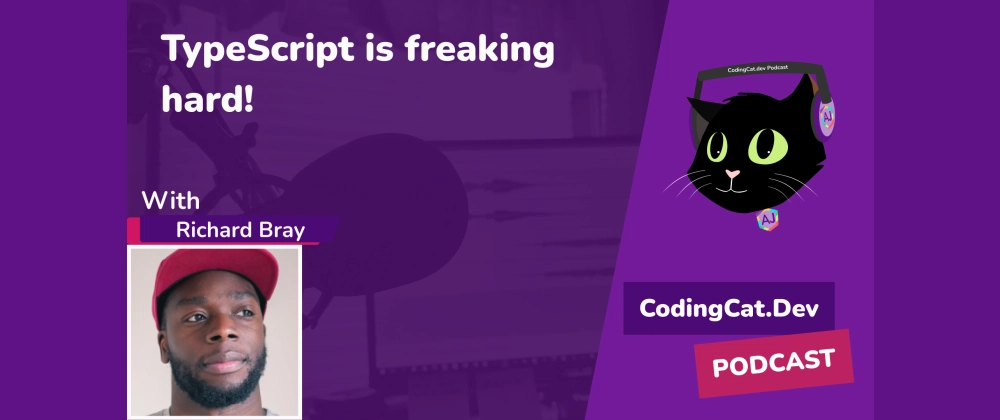Original: https://codingcat.dev/podcast/4-1-typescript-is-freaking-hard
Navigating the Complexities of TypeScript: A Comprehensive Beginner's Guide
In the realm of programming languages, TypeScript stands out as a powerful tool that enhances the capabilities of JavaScript by introducing static typing. This feature promises to improve code reliability and readability, but mastering TypeScript can be a daunting task for beginners. This comprehensive guide aims to address the challenges of learning TypeScript and provide a structured approach to mastering its fundamentals.
Understanding the Complexity of TypeScript
The primary challenge in learning TypeScript lies in its departure from the dynamic nature of JavaScript. Programmers accustomed to JavaScript's flexible type system may find the strict type requirements of TypeScript initially overwhelming. This transition often leads to confusion and frustration, particularly when dealing with type errors and complex type annotations.
Furthermore, the abundance of TypeScript features, such as interfaces, generics, and type aliases, can be overwhelming for newcomers. Grasping the intricacies of these features and their proper application requires a deep understanding of TypeScript's core concepts and their practical implications.
Embracing the Power of Array and Tuple Types
Arrays and Tuples are fundamental data structures in programming, and understanding their usage in TypeScript is crucial. Arrays store collections of elements of the same type, while Tuples store fixed-size collections of elements with specific types.
let numbers: number[] = [1, 2, 3]; // Array of numbers
let tuple: [string, number, boolean] = ['Alice', 25, true]; // Tuple with specific types
Exploring the any, void, null, and undefined Types
Any type represents values of unknown or dynamically determined types. It's useful when dealing with external data sources or situations where type information is unavailable. The void type indicates the absence of a return value.
let value: any = 'Hello'; // Value of unknown type
function greet(): void {
console.log('Hello!'); // Function with no return value
}
Harnessing the Power of Object Types
Object types define the structure of objects, specifying the properties and their associated types. This feature promotes type safety and enhances code maintainability.
interface User {
name: string;
age: number;
email: string;
}
let user: User = { name: 'John Doe', age: 30, email: 'johndoe@example.com' };
Leveraging Optional and Utility Types
Optional types allow properties to be optional, providing flexibility in object structure. Utility types provide predefined functionalities for manipulating and modifying types.
interface Address {
street: string;
city: string;
state?: string; // Optional property
}
type PartialAddress = Partial<Address>; // Partial utility type
type ReadonlyAddress = Readonly<Address>; // Readonly utility type
Working with Interfaces, Generics, and Type Aliases
Interfaces define the structure of objects, ensuring consistent data structures across the application. Generics enable the creation of reusable components that work with different data types. Type aliases provide convenient names for complex type expressions.
interface Person {
firstName: string;
lastName: string;
}
function swap<T>(items: T[], index1: number, index2: number): T[] {
[items[index1], items[index2]] = [items[index2], items[index1]];
return items;
}
type UserID = number;
let userId: UserID = 12345;
Overcoming the Challenges of TypeScript
To effectively overcome the challenges of learning TypeScript, several strategies can be employed:
- Embrace a Structured Learning Approach: Utilize comprehensive TypeScript courses and tutorials, following along with exercises and carefully reviewing explanations.
- Practice Regularly: Consistent practice is crucial for solidifying TypeScript concepts. Engage in regular coding exercises and apply the newly acquired knowledge to personal projects.
- Seek Clarification When Needed: Don't hesitate to seek clarification when encountering difficulties. Consult online resources, engage in discussions with experienced TypeScript developers, and utilize online communities for support.
- Focus on Understanding Concepts: Prioritize comprehending the underlying concepts rather than merely memorizing syntax. This approach fosters a deeper understanding and facilitates the application of TypeScript in various scenarios.
- Be Patient and Persistent: Learning TypeScript requires patience and persistence. Embrace the challenges as opportunities for growth and celebrate each milestone along the way.
Conclusion
While TypeScript presents a learning curve, its benefits in terms of code robustness, maintainability, and reliability are undeniable. By adopting a structured learning approach, employing effective strategies, and utilizing comprehensive resources, beginners can navigate the challenges of TypeScript and harness its power to create high-quality software applications. Remember, consistent practice, a focus on understanding concepts,



Top comments (0)